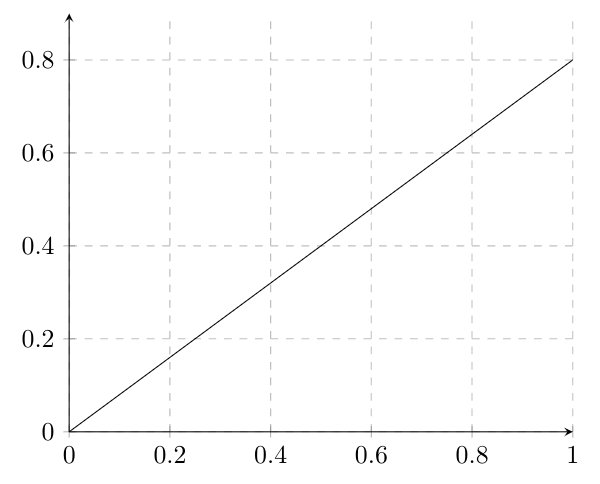This is a repeating question on continuity. Let me solve it a non-standard way -- which should be useful in GATE.
From the question $f$ is a function mapping the set of real (or rational) numbers between [0,1] to [0.4,0.6]. So, clearly the co-domain here is smaller than the domain set. The function is not given as onto and so, there is no requirement that all elements in co-domain set be mapped to by the domain set. We are half done now. Lets see the options:
A. $f(0.5) = 0.5$. False, as we can have $f(0.5) = 0.4$, continuity does not imply anything other than all points being mapped being continuous.
C. Again false, we can have $f(x) = 0.6$ for all $x$.
D. False, same reason as for A.
Only B option left- which needs to be proved as correct now since we also have E option. We know that for a function all elements in domain set must have a mapping. All these can map to either 1 or more elements but at least one element must be there in the range set. i.e., $f(x) = y$ is true for some $y$ which is in $[0.4, 0.6]$. In the minimal case this is a single element say $c$. Now for $x = 1/0.8$, option B is true. In the other case, say the minimal value of $f(x) = a$ and the maximum value be $f(x) = b$. Now,
as per Intermediate Value theorem (see: https://www.math.ucdavis.edu/~hunter/intro_analysis_pdf/ch7.pdf), all points between $a$ and $b$ are also in the range set as $f$ is continuous. Now, we need to consider $x$ in the range $[0.5, 0.75]$ as then only $f(x)$ can be $0.8 x$ and be in $[0.4, 0.6]$. In our case we have
$f(x_1) = a, f(x_2) = b$. Lets assume $a != 0.8x_1$ and $b!=0.8x_2$. Now, for all other points in $[0.5, 0.75]$, $f(x)$ must be between $a$ and $b$ and all points between $a$ and $b$ must be mapped by some $x$.
Moreover, for $x =0.5$, $f(x) \geq 0.4$ and for $x=0.75$, $f(x) \leq 0.6$. So, if we plot $g(x) = 0.8x$, this line should cross $f(x)$ at some point between $0.5$ and $0.75$ because at $x= 0.5$, $f(x)$ must be above or equal to the line $0.8x$ (shown below) and for $x = 0.75$ it must be below or equal which means an intersection must be there.

This shows there exist some $x$ between $0.5$ and $0.75$ for which $f(x) = 0.8x$ a stronger case than option B. So, B option is true. Now please try for $f(x) = 0.9x$ and see if it is true.